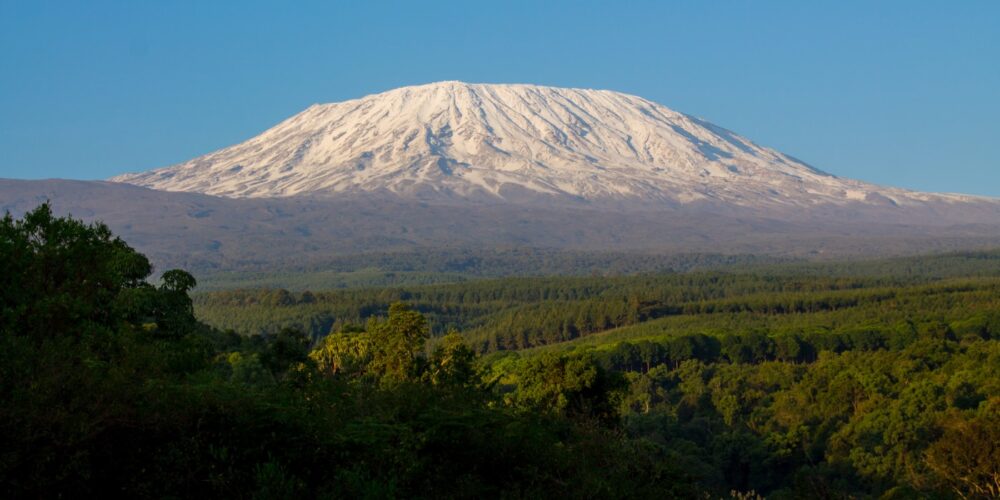
Kilimanjaro is a volcanic massif that rises to 5,895 meters (19,340 feet) above sea level, making it the highest mountain in Africa and the highest free-standing mountain in the world. It is located in northeastern Tanzania, near the border with Kenya, and consists of three main peaks: Kibo, Mawenzi, and Shira. Kilimanjaro is a popular destination for climbers, tourists, and scientists who are interested in its diverse flora and fauna, its unique climate zones, and its cultural significance.
Photo 102805301 © Yuliia Yurasova | Dreamstime.com
Geographically, Kilimanjaro is a stratovolcano, which means it is composed of layers of lava, ash, and rock. The youngest and highest peak, Kibo, has a crater that measures 2 kilometers (1.2 miles) across and contains an inner cone that shows signs of residual volcanic activity. The last major eruption of Kibo occurred about 360,000 years ago, but minor eruptions and fumaroles have been recorded as recently as the 20th century. Kibo is also famous for its snow-capped summit, which contrasts with the surrounding savanna plains. However, due to global warming and deforestation, the snow cover has been shrinking rapidly and may disappear completely in the near future.
Politically, Kilimanjaro is part of Tanzania, a sovereign state in East Africa that gained its independence from Britain in 1961. The mountain lies within the Kilimanjaro Region, one of the 31 administrative regions of Tanzania. The region has a population of about 1.6 million people and is divided into seven districts: Hai, Moshi Rural, Moshi Urban, Mwanga, Rombo, Same, and Siha. The regional capital is Moshi, a town at the foot of the mountain that serves as a gateway for visitors. The region is also home to several ethnic groups, such as the Chagga, Pare, Kahe, and Maasai, who have their own languages, cultures, and traditions.
Touristic, Kilimanjaro attracts tens of thousands of visitors every year who come to enjoy its natural beauty and challenge themselves to reach its summit. The mountain has six official routes for climbing: Marangu, Machame, Rongai, Lemosho, Shira, and Umbwe. Each route has different levels of difficulty, scenery, and accommodation options. The climb usually takes between five to nine days depending on the route and the acclimatization process. The most popular route is Marangu, also known as the “Coca-Cola” route because of its relative ease and availability of soft drinks at the huts along the way. The most scenic route is Machame, also known as the “Whiskey” route because of its higher difficulty and more rugged terrain.
Besides climbing, there are other ways to visit Kilimanjaro and experience its wonders. One option is to take a day trip to the lower slopes of the mountain and explore its lush rainforest or moorland habitats.
Another option is to join a safari tour that combines Kilimanjaro with other nearby attractions such as Serengeti National Park or Ngorongoro Crater (from €508 / p.). A third option is to volunteer for a community project that supports the local people who live around the mountain and depend on its resources.
Kilimanjaro is more than just a mountain; it is a symbol of Africa’s beauty, diversity, and resilience. It is a place where nature and culture meet and where adventure and discovery await.
One reply on “Kilimanjaro, Tanzania, geographical, political and touristic aspects”
[…] But it was not my intention on this first trip to Africa. And also, the East side of Africa, as Tanzania and Kenya have to offer the greatest […]